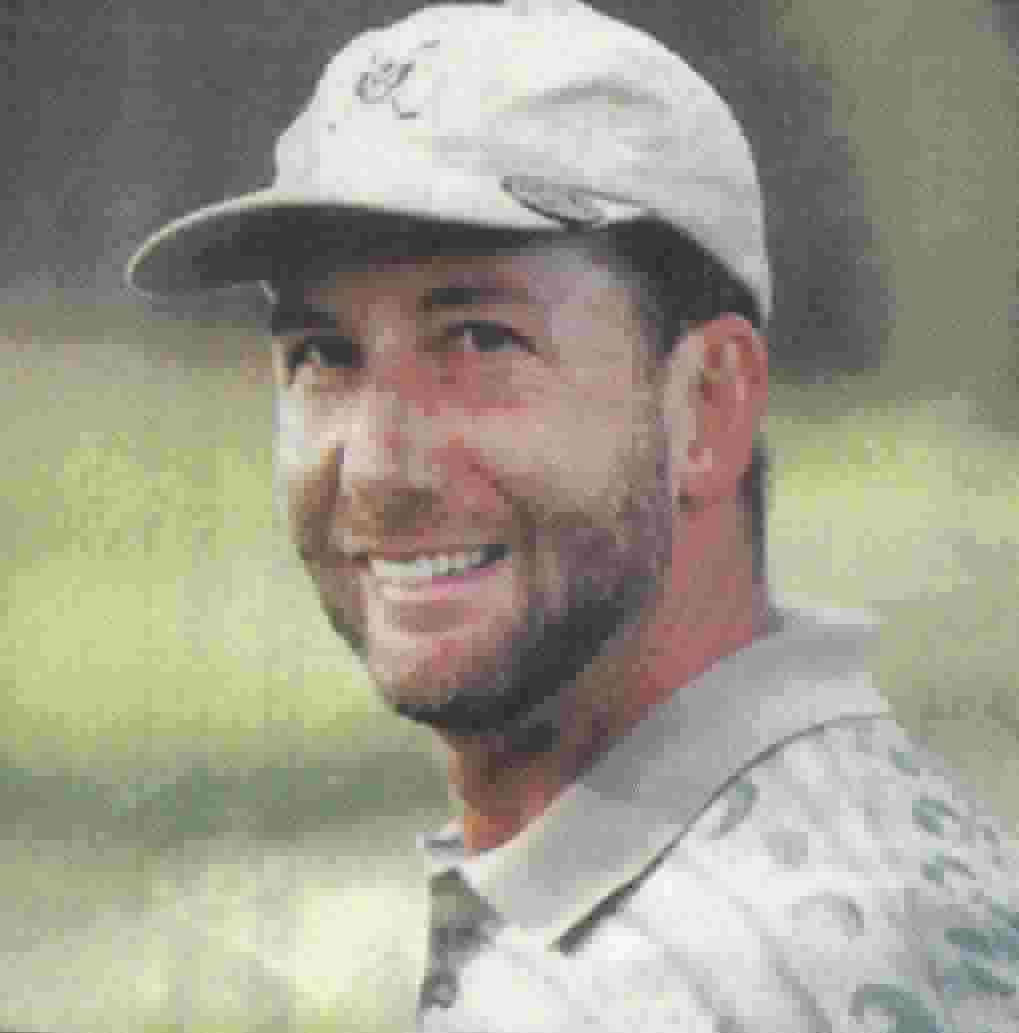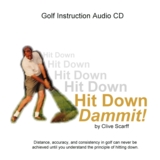Distance & Technology Part 7: Golf
Ball Spin Distance
Read
other Parts from this
series here, Archives.
If you'd
like one on
one explanations
about the topic,
sign up for the PGI
Member Select Club and
I'll answer all your
questions in a prompt,
thorough fashion.
Now on to this week's
topic.
VII. Golf
Ball Spin & Distance
If
you've been a Probable
Golfer long, you
know that most
of the analysis
that I do is using
a golf ball trajectory
computer program
that I have written
to simulate golf
ball flight. The
most difficult
things to factor
in are the changing
drag and lift forces
that occur on the
ball. Both are
dependent on ball
speed and backspin.
They are ever changing.
I have accomplished
this task by using
a spreadsheet.
My model agrees
very well with
experimental results.
To see more, go
here.
With
my computer model,
I can change certain
quantities and
keep others constant.
In this case, I
varied the amount
of backspin on
the ball (simulating
different types
of balls: low spin,
high spin, etc)
and calculated
carry and total
distance for different
driver speeds.
The results are
tabulated below.
The values assume
a 10 degree lofted
driver and a 12
degree launch angle.
Backspin (rpm)
|
Club
speed 80 mph
Ball speed
115 mph
|
Club
speed 100 mph
Ball speed
143 mph
|
Club
speed 120 mph
Ball speed
172 mph
|
1200 |
134 |
176 |
199 |
241 |
261 |
299 |
1500 |
139 |
179 |
205 |
243 |
266 |
302 |
1800 |
142 |
181 |
208 |
245 |
270 |
304 |
2100 |
146 |
182 |
213 |
247 |
274 |
306 |
2400 |
150 |
182 |
216 |
248 |
275 |
306 |
2700 |
153 |
186 |
218 |
249 |
277 |
306 |
3000 |
155 |
186 |
220 |
249 |
277 |
305 |
3300 |
157 |
187 |
222 |
250 |
277 |
304 |
3600 |
158 |
187 |
223 |
249 |
276 |
301 |
3900 |
160 |
187 |
223 |
248 |
275 |
299 |
4200 |
161 |
187 |
222 |
246 |
273 |
297 |
|
|
|
|
|
|
|
For
the 80 mph clubhead
speed, total distance
is optimized
with a high backspin
of about
4000 rpm while
carry distance
is optimized at
an even higher
backspin. For 100
mph, carry is optimized
at about 3800 rpm
and total distance
at 3300 rpm. for
120
mph, carry is optimized
at 3000 rpm and
total distance
at 2400 rpm. Basically,
the higher your
clubhead speed,
the lower spin
you want, thus
you should be playing
a low spin ball.
A low clubhead
speed player should
be playing with
a high spin ball
(as has been discussed
in previous newsletters,
a low clubhead
speed player should
be playing with
a high loft driver).
It
should be noted
that realistic
backspin values
for a Driver are
in the range of
2500 to 3500 rpm,
the most significant
determiner being
the loft of the
club. Matching
this range with
the table values
above, it can be
observed that there
is really no significant
difference in distances.
You cannot really
change significantly
your driver distance
by using ball manufacturers'
"low spin" balls
or "high spin"
balls. What is
more important
is the correct
loft of the driver
to match your swing
speed (discussed
in a previous newsletter).
What
about when playing
in the wind? Take
a look at the computed
results for the
100 mph clubhead
speed with a 11
mph wind. Note
that the effects
of backspin are
a little more significant.
You might consider
using a low spin
ball for hitting
into the wind and
a high spin ball
for hitting with
the wind.
|
|

Learn
your
perfect
swing
while
attached
to the "Dream
Swing."
|
Backspin (rpm)
|
Club
speed 100 mph
11 mph head
wind
|
Club
speed 100 mph
No wind
|
Club
speed 100 mph
11 mph tail
wind
|
1200 |
195 |
226 |
199 |
241 |
200 |
253 |
1500 |
|
|
205 |
243 |
|
|
1800 |
203 |
228 |
208 |
245 |
211 |
259 |
2100 |
|
|
213 |
247 |
|
|
2400 |
207 |
229 |
216 |
248 |
219 |
263 |
2700 |
|
|
218 |
249 |
|
|
3000 |
208 |
226 |
220 |
249 |
226 |
267 |
3300 |
|
|
222 |
250 |
|
|
3600 |
206 |
222 |
223 |
249 |
231 |
269 |
3900 |
|
|
223 |
248 |
|
|
4200 |
201 |
215 |
222 |
246 |
233 |
269 |
|
|
|
|
|
|
|
Purchase
my Longest
Golf Ball Report (over
230 sold so far)
in which I statistically
analyze
distances
of over 70 different
golf balls with
differing constructions.
The balls were
hit
using a mechanical
hitting machine.
Take
a look at the results
of
Equip2Golf.com,
an independent
golf testing company.
They have tested
many of the new
golf balls using
golfers and launch
monitor equipment.
Below is a sample
of their results.
Play
with my Driver
Distance Calculator.
You can input such
variables as loft
and clubhead speed
to determine the
optimum loft. I'll
be adding to it
soon so that you
can input different
golf ball parameters
such as speed and
spin.
A list of resources that have been used to produce this newsletter
can be found on my
website here.
The next newsletter's topic will begin a series on the short
game. From putting
to chipping to bunker
play. If you have any
questions ahead of
time, send me an email.
The focus
of my site
is to utilize science
and math to lower
your score. New technology
is one
way to achieve this,
but to be honest,
the technology is
one small piece of
the puzzle.
To actually improve significantly,
we all need to:
1. Improve our swings using CD
Interactive, Hit
Down Dammit!
2. Learn how to swing simpler
like the Iron Byron
with the great coffee
table book, Swing
Machine Golf!
3. Improve our physical fitness
and strength.
The
Golf Trainer Power
Performance Programô
4. Improve our mental games.
Golf
Mind Software
5. Improve our Probable
Golf games.
Learn how to make better
choices on the course
through knowing how
shot patterns and reading
the elements and course
better.
Click on the links above to
take a look at
ways that I personally
use myself and
recommend you try
as well.
Hope
I provided some useful
ways for to become
better prepared for
you best golf season
ever.
Ken Tannar
If you'd like to opt out of this newsletter, send
me an email with the subject "opt
out, please"
|









